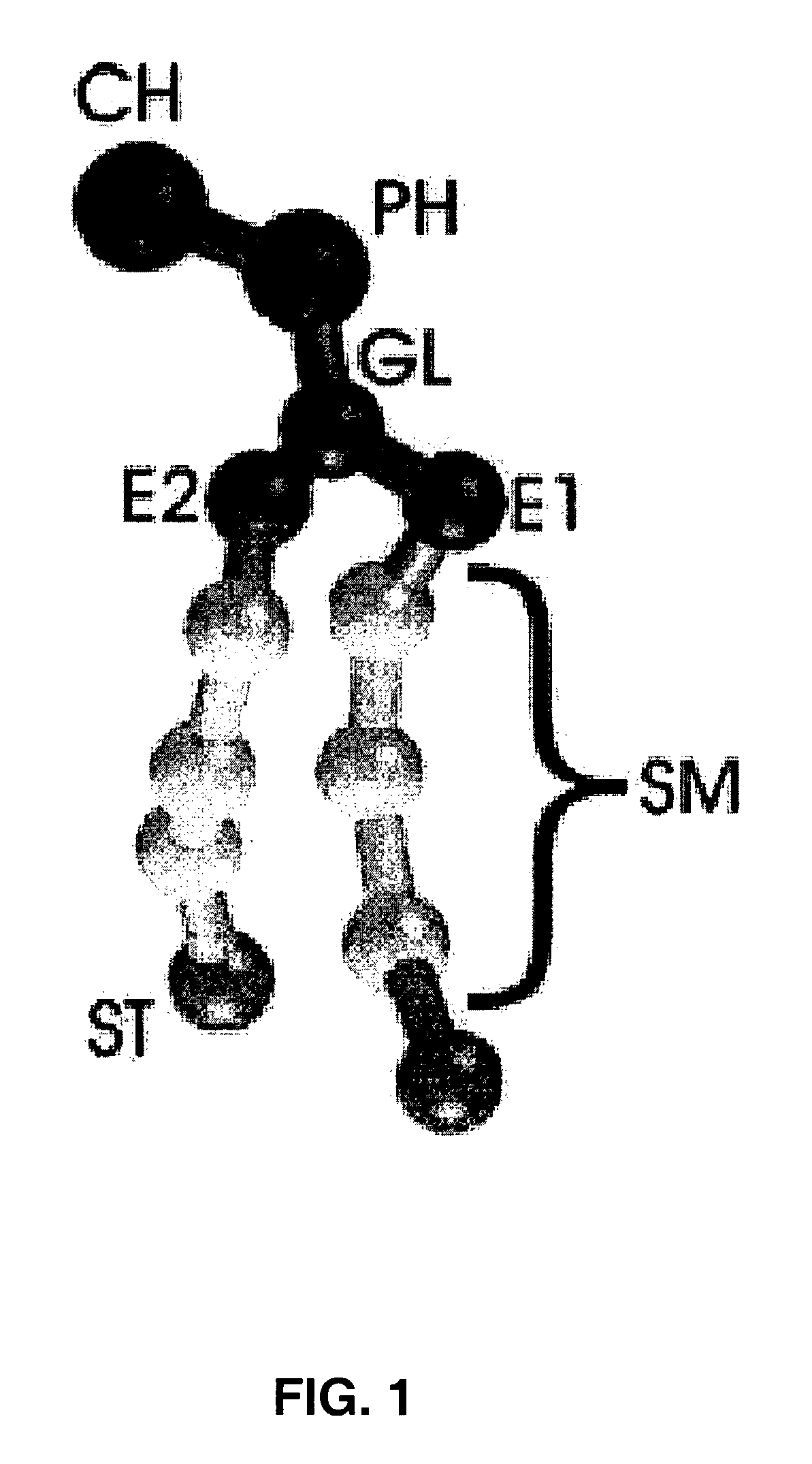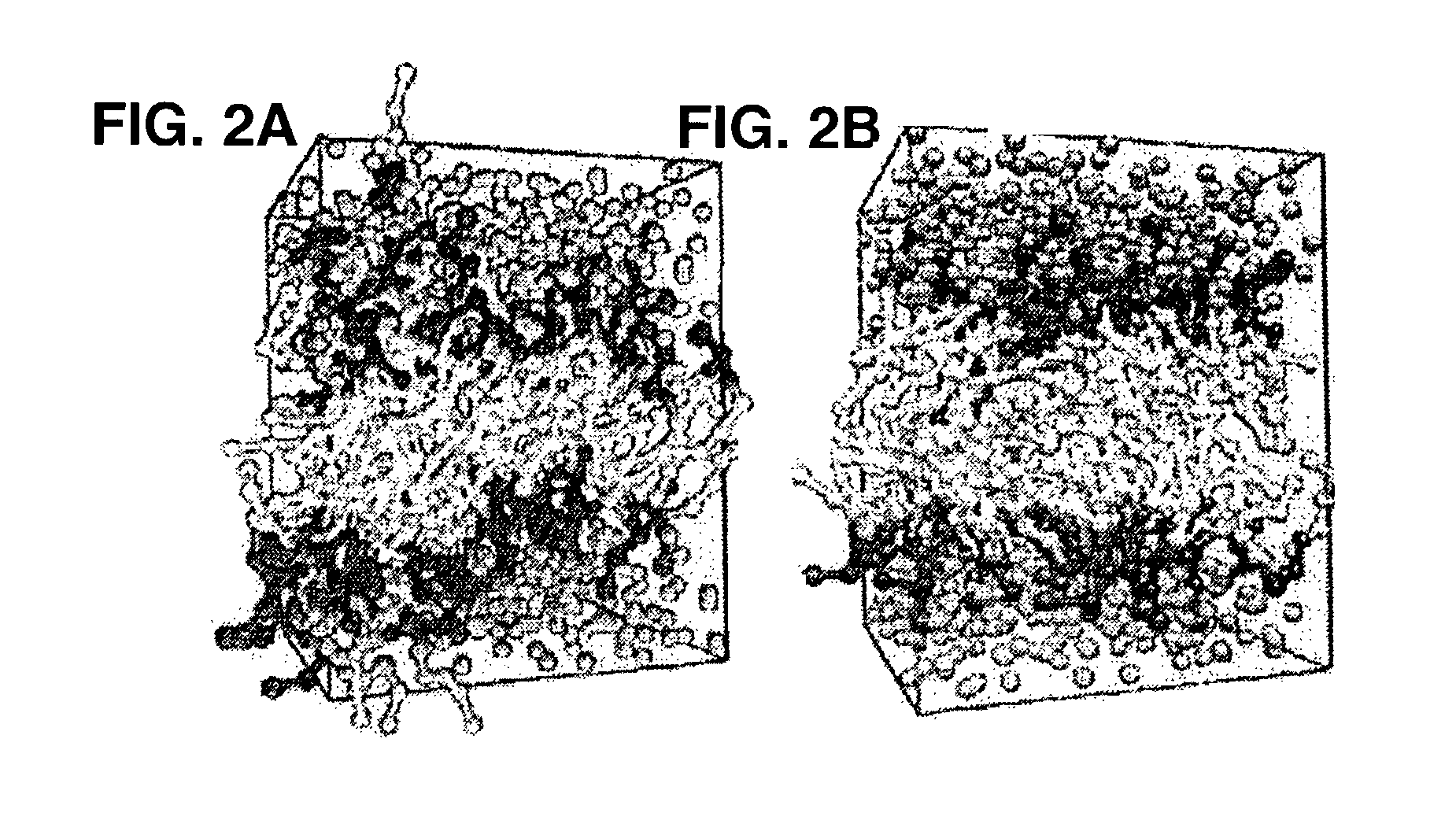Methods, systems, and computer program products for simulating biomembrances using coarse grain models
a biomembrane and model technology, applied in the field of insilico molecular processing, can solve the problems of power limitation of such studies, and the inability to compute the large amount of collective phenomena described abov
- Summary
- Abstract
- Description
- Claims
- Application Information
AI Technical Summary
Benefits of technology
Problems solved by technology
Method used
Image
Examples
Embodiment Construction
I. Introduction
[0023]Atomic simulation techniques suffer from computational limitations because of the number and complexity of features and factors to be analyzed. In accordance with the present invention, simulations are performed using coarse grain (CG) models, which use substantially less computer time than atomic simulations. See, for example:
[0024]R. Goetz, T. Lipowski, J. Chem. Phys. 108 (1998) 7397;
[0025]T. R. Weikl, R. R. Netz, R. Lipowsky, Phys. Rev. E 62 (2000) R45;
[0026]R. Goetz, G. Gompper, R. Lipowsky, Phys. Rev. Lett. 82 (2000) 221; and
[0027]M. Venturoli, B. Smit, Phys. Chem. Comm. 10 (1999); all of which are incorporated herein by reference in their entireties.
[0028]The present invention is directed to methods, systems, and computer program products for studying phospholipid bilayer behavior using coarse grain models. The present invention allows CG models to be used to extend not only the size of the bilayer system under study, but also the effective time scale prob...
PUM
| Property | Measurement | Unit |
|---|---|---|
| Temperature | aaaaa | aaaaa |
| Power | aaaaa | aaaaa |
| Time | aaaaa | aaaaa |
Abstract
Description
Claims
Application Information
 Login to View More
Login to View More - R&D
- Intellectual Property
- Life Sciences
- Materials
- Tech Scout
- Unparalleled Data Quality
- Higher Quality Content
- 60% Fewer Hallucinations
Browse by: Latest US Patents, China's latest patents, Technical Efficacy Thesaurus, Application Domain, Technology Topic, Popular Technical Reports.
© 2025 PatSnap. All rights reserved.Legal|Privacy policy|Modern Slavery Act Transparency Statement|Sitemap|About US| Contact US: help@patsnap.com



